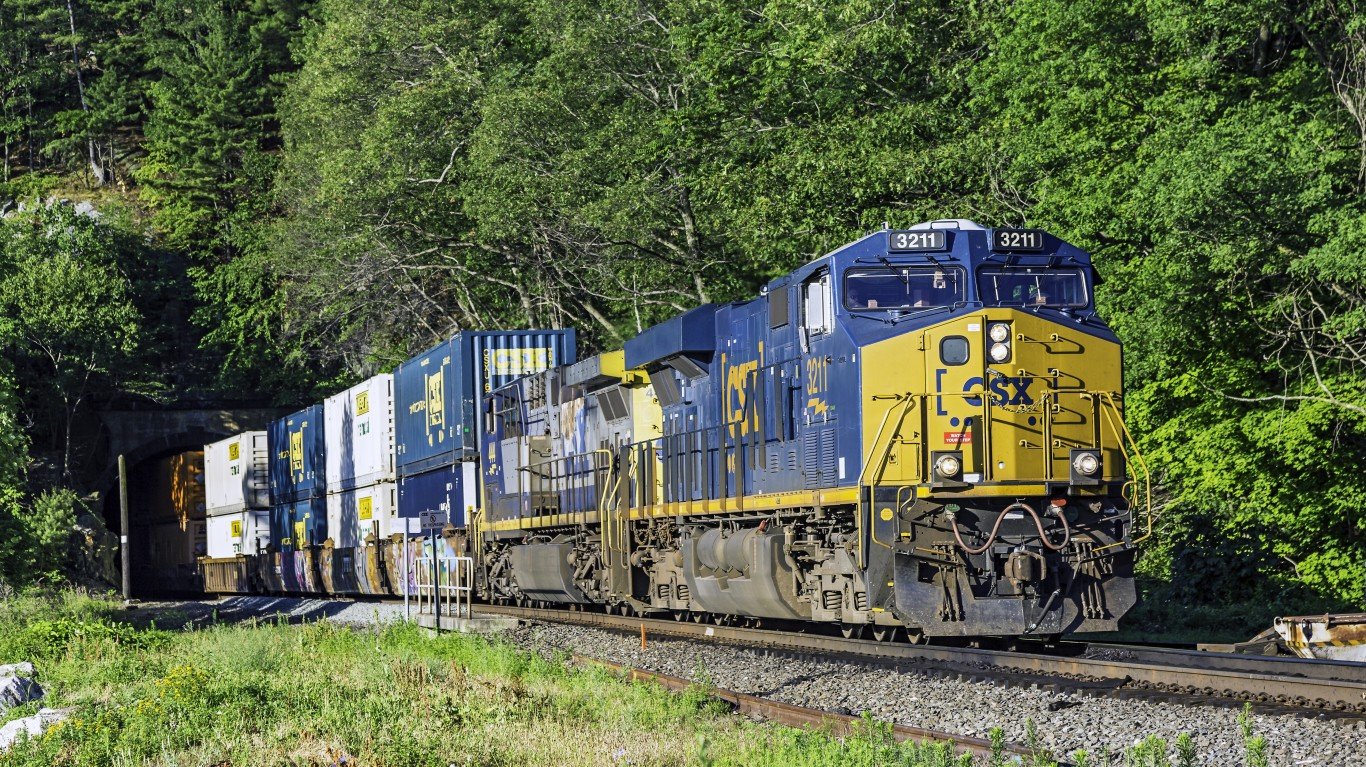

Last week, railroad operator CSX Corp. (NYSE: CSX) saw its carload traffic improve by nearly 2 percentage points compared with the prior week. Traffic is still down by 22.2% year over year for the quarter and 9.9% for the year to date, but the slight increase is a hopeful sign.
In an industry already suffering from a sharp decrease in the number of coal shipments, last week’s lifeline was tossed to CSX by an uptick in intermodal, automobile, metals and petroleum shipments. The secular decline in coal shipments is not going to reverse itself, but the other big declines appear to have been cyclical and related to the essentially frozen U.S. economy. That freeze is the result of the COVID-19 pandemic.
As the economy begins to reopen, there is hope that consumers will once again begin spending, driving demand for more goods. The increased demand would have the effect of driving demand for more transportation services, including rail transportation.
CSX May Be Poised to Bounce Back
CSX operates more than 21,000 miles of track, all of it east of the Mississippi River, with routes running from Montreal to Miami and Boston to Chicago and St. Louis. The company’s trains run through most major cities in that entire region.
Financially, current assets of $3.8 billion exceed current liabilities of $2.2 billion. Cash and short-term investments total nearly $2.5 billion. Long-term debt of almost $17 billion is high, but the company is profitable enough ($3.3 billion last year) to service the debt.
Like overall carload traffic last week, intermodal carloads improved by about 2% week over week. Intermodal containers and trailers accounted for more than 44,400 carloads last week. For the year to date, however, intermodal carloads were down about 5.6% last week, compared with a decline of 5.3% in the prior week.
Problems Still Remain for Railroads
Overall, new car shipments have fallen by 37% year over year through last week, according to industry data from the Association of American Railroads. For just the week, shipments were down 71% compared to 2019. As automakers slowly resume production, these numbers will get better, but a quick recovery of some 4,800 weekly carloads is unlikely.
Petroleum and petroleum product shipments are down overall by 6.8% for the year to date, far worse than CSX’s decline of 2.5%. Chemical carloads are down 3% nationally but just 0.8% for CSX.
Intermodal shipments were down 11.2% overall last week, and CSX shipments were down 11.4%. For the year to date, total international shipments are down 11.3% and CSX has seen a decline of just 5.6%.
Compared to all U.S. rail traffic, CSX appears to be doing a bit better. Total carloads are down by 12.8% for all U.S. railroads, while CSX traffic is down 9.9% for the year to date.
Yet, it is against the trucking industry that CSX wants to battle back. Executive Vice President Mark Wallace told a conference audience in April that there are “billions and billions of dollars” worth of truck freight once moved by rail and CSX wants those dollars back. The company’s plans were a little short on detail but seemed to indicate somewhat better pricing.
CSX is getting some help from devastating demand declines for trucking companies.
More Federal Relief May Be the Key
Many politicians, at all levels of government, either believe or want to believe that the economy will pick up quickly as businesses reopen and Americans return to work. Among analysts and economists, the outlook is more cautious.
The initial round of $1,200 payments to all Americans has helped many who lost their jobs, either temporarily or permanently, due to the COVID-19 outbreak. The boosted unemployment payments helped too, but those run out in July, as do many of the payment postponement pieces of the CARES Act.
Unless consumer demand returns, the economy will continue to stutter and demand for rail service to move goods around will remain soft. Extending the payment programs for another quarter would definitely help by putting more cash in consumers’ hands to use to buy more than just necessities. That could cost another $2 trillion or $3 trillion dollars.
Any supply-side relief for the U.S. rail industry is likely to come as an afterthought simply because Americans are used to just having items on store shelves when they want them with little attention paid to how they get there.
Politicians will go for the high-visibility parts of the economy first. Then they will tackle the noisiest parts. If there’s anything left over, then the rail and trucking industries might get something.
Essential Tips for Investing: Sponsored
A financial advisor can help you understand the advantages and disadvantages of investment properties. Finding a qualified financial advisor doesn’t have to be hard. SmartAsset’s free tool matches you with up to three financial advisors who serve your area, and you can interview your advisor matches at no cost to decide which one is right for you. If you’re ready to find an advisor who can help you achieve your financial goals, get started now.
Investing in real estate can diversify your portfolio. But expanding your horizons may add additional costs. If you’re an investor looking to minimize expenses, consider checking out online brokerages. They often offer low investment fees, helping you maximize your profit.
Thank you for reading! Have some feedback for us?
Contact the 24/7 Wall St. editorial team.



